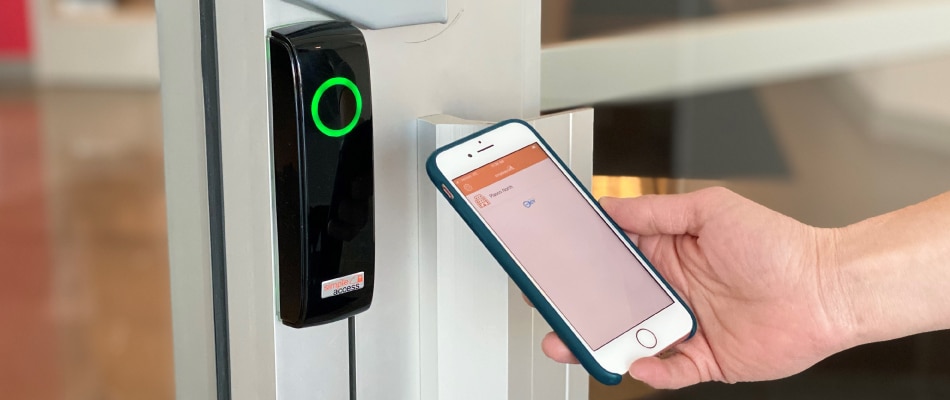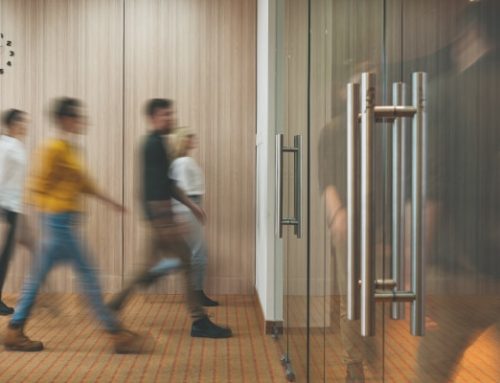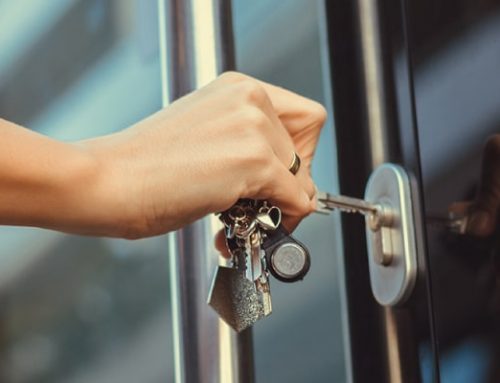The way you do business is changing – and the way you secure your business should change, too. If you’re still on the fence about upgrading your small- or medium-sized (SMB) business’s door access control system, read on to discover why now is the time to revamp your approach to physical security.
Defining building access control
Simply put, building access control is the system behind how and when employees and visitors can enter your business. These can span the continuum of low-tech offerings to high-tech systems for the most secure spaces. Compared to traditional locks and keys or a standalone smart lock, an access control system is more robust and secure way to manage access for multiple users with unique permission settings, remotely monitor and manage access, see analytics, and scale easily as your needs or budgets grow.
When it comes to locks and hardware to protect your assets there are five main categories.
Traditional locks and flat keys sit at one end of that continuum. This system is familiar — but also problematic for several reasons:
- Physical keys are cumbersome and obsolete
- Administrating traditional keys and locks is time-consuming and inefficient
- Keys don’t provide a record of who accessed your business and when
Access cards and fobs can provide a record of who entered a space and when. They are physical devices that can be lost or stolen, but one clear advantage of access cards and fobs is that access can be revoked without physically returning the card or fob.
Pin codes fall squarely in the category of “things you know.” These are short codes entered in a keypad at the door. With today’s smart access control and keyless entry systems, individual codes are easily customized per user, can be issued and revoked to guests with time limitations, and easily managed with remote, cloud-based access software.
Mobile phone credentials offer the user convenience of not having to keep track of a key or access card, and the administrator the convenience of remotely granting and revoking access privileges. And since they’re tied to an individual’s smartphone, they’re not as easily shared (or forgotten) as a key, fob or access card.
Why now is the time to upgrade your access control system
Now that it’s clear what an access control system is, here are five reasons why you small business needs a physical access control system now more than ever.
1. Employees expect flexibility.
Over the past few years, flexible and hybrid work environments have transitioned from being a rarity to a necessity — and now an expectation. Support the kind of convenience your employees want and need with a smart door access control system that lets you customize access, remotely, and from your smartphone. Giving your employees the flexibility to access your building with changing needs and schedules, through a key card, fob, or even their mobile phone.
2. Your legacy access control system is aging.
According to a study by HID Global, 52% of organizations surveyed are relying on card readers that are three to six years old, while 39.2% are using software that’s three to six years old. Don’t put your employees, sensitive information and business assets at risk by relying on aging systems and door locks.
3. Employees are departing at record rates during “The Great Resignation.”
Employees are leaving their jobs at record numbers, according to the U.S. Bureau of Labor Statistics. All those resignations and terminations mean more administration work for you to ensure departing employees have access to your business revoked in a timely manner. Higher turnover also likely means more frequent onboarding of new employees remotely, bringing a second wave of admin work to provide new access credentials. A smart keyless entry system gives you options and convenience with not only the hardware but also with remote management and notifications.
4. Save time on access control administration when you’re already spread thin.
If you’re like most SMB leaders, you’re already working more than 50 hours a week. And a big chunk of that time — 20+ hours — is going to ancillary and non-revenue-generating tasks that aren’t related to your core business. A smart access control system eliminates the administrative work around managing keys. You can quickly and easily manage your employees’ role-based access from a simple smartphone app from anywhere, freeing up more time to focus on the things that matter most for your business.
5. A smart access control partner makes it easy to upgrade.
You juggle a lot of different roles as an SMB leader — and no one can be an expert in all things. An access control partner like SimpleAccess can design and support a smart access control system that fits your needs, including coordinating installation and training new staff. You can step up to the simplicity, seamlessness and security of smart, mobile access control – and never again be forced to moonlight as a locksmith or IT professional.






